On Election Day, voters in several states will be asked on ballot initiatives if they want to implement ranked choice voting in their state.
I know a lot of you who use ranked choice voting in your elections love it, and a lot more of you have no idea what it is.
Ranked choice voting allows voters to rank candidates on their ballots. Depending on the number of candidates, you might be asked to rank a group of potential candidates in the order you most prefer them.
For example, let’s assume your ballot looks like this:
Linda is your top pick, so you fill in the bubble indicating she is your first choice. Cindy is the second best out of the bunch, your third choice is Bob, and Dave is the worst option, so he gets fourth.
At the end of the day, all the votes are tallied. If a candidate gets more than 50% of the vote, they are the winner, and that’s the end of it.
If, however, no candidate gets greater than 50%, the next phase kicks in.
For the sake of argument, let’s say this is how the vote totals shook out:
In the next phase, Dave is eliminated from the running, since he had the fewest votes. If Dave was your first choice, your vote was eliminated. To make sure you have a say in the outcome of the election, the votes are then re-tallied using the person you ranked as your second choice. When everything is recalculated, here are the new results:
Linda now has greater than 50% of the vote, and wins this election.
Why do people advocate for ranked choice voting?
There are a few reasons why ranked choice voting might yield better results than the traditional voting methods.
1. You’re more likely to end up with a candidate that the majority of people can at least tolerate. In the above example, only 40% of the voters picked Linda as their first choice. But a majority of voters picked her as either their first or second choice. This leads to more consensus building among the voters.
2. It can change candidate behavior. If you can’t be a voter’s first choice, you want to at least be their second choice. This means that, as a candidate, you can’t spend all your time insulting people who are voting for Bob, Dave, or Cindy, because you can still win by being enough people’s second best choice.
It has the potential to dampen the amount of rancor that is present in political elections, because people won’t just play to their base – they have to appeal to at least a percentage of the people on the other side as well.
3. It can encourage more candidates to enter the race and allow for the proliferation of more political parties to better represent Americans as a whole.
The majority of Americans do not feel well represented by the two party system, and using a voting system that discourages the two party binary can be the fertile soil in which more independents and third party candidates can grow. Competition is good for democracy. Competition is good for voters.
This is why you see strong anti-ranked choice voting movements coming directly from the existing political parties themselves – they don’t want to have to compete against three or four other candidates, it’s easier and cheaper to compete against one. They don’t want to share their power.
4. It can cost less money because you don’t have to have expensive runoff elections. Remember back during the 2020 election when there were runoff elections in Georgia for their two Senate seats?
Taxpayers foot the bill for those elections (they can cost millions), and the candidates themselves spent over $700 million trying to win both seats, because the party that won was going to have control of the Senate.
Are there cons?
One of the biggest complaints about ranked choice voting is that people don’t like change, and it would require education to make sure people understand how it works.
It can be more confusing than a system where you only pick one option. But if people are capable of understanding the rules of football or how a video game works, they can understand how to do ranked choice voting.
It can also take more time to determine a winner if there is not a majority winner immediately.
Where is ranked choice voting on the ballot?
There are only two states right now that use ranked choice voting in all statewide elections: Alaska and Maine.
But it’s also used in 48 other jurisdictions (three counties and 45 cities). Several states allow ranked choice voting for military and overseas voters in federal runoff elections.
Voters in four states (Oregon, Nevada, Idaho, and Colorado) and Washington, DC will vote on ballot initiatives this year to approve the implementation of ranked choice.
There’s also a ballot initiative in Alaska attempting to end ranked choice voting, and one in Missouri to prohibit it, even though the state doesn’t currently use it.
In Arizona, there are *two* ballot initiatives about primaries, making it extra confusing for voters.
The first one, Proposition 133, aims to amend the state constitution to *require* partisan primaries and prohibit primaries where multiple candidates of different parties appear on the same ballot.
The second, Proposition 140, wants to change primaries, and open general elections up to ranked choice voting.
More on that below.
Who is against ranked choice voting?
Several states have passed laws banning ranked choice voting, even though it wasn’t being used there. Currently, ten states forbid it: Alabama, Kentucky, Louisiana, Mississippi, Oklahoma, Idaho, Montana, South Dakota, Florida and Tennessee.
The bans are recent (the first laws were passed in 2022 in FL and TN).
The Heritage Foundation (the group behind Project 2025) calls ranked choice voting “chaotic, and opaque” and says it “disenfranchises voters in multiple rounds of vote counting and allows marginal candidates not the first choice of a majority of voters to win.”
In Arizona, voters are being told ranked choice voting would lead to “California-style elections,” including “Jungle primaries.” That’s a phrase used to describe primaries that are open (all candidates run against each other on the same ballot regardless of party).
Scare tactics aren’t new in elections, and this is a clear attempt to convince voters that ranked choice voting is dangerous. These sorts of things can be very effective, especially for voters who aren’t informed on the many issues they might be faced with on the ballot.
The propositions themselves can be confusing
In states where ranked choice voting is on the ballot, the wording can be opaque. Here’s how it’s phrased on Colorado’s ballot:
A “yes” vote in Colorado means you support creating a top-four primary election system, and ranked choice voting. A top-four primary is a primary where all candidates appear on the same ballot, regardless of party, and the top four vote getters move on to the general election, where ranked choice voting will be used.
Currently, Colorado holds semi-closed primaries, which means only members of the registered party, and unaffiliated voters (independents or people not registered with a party), can vote on candidates put up by that party. So only registered Democrats and unaffiliated voters can pick the Democratic candidate, and same for Republicans.
A “no” vote here means you want to keep things as they are: semi-closed primaries, and the top vote getter in each party moves on to the general election to run against each other.
In Idaho, voters have to read through all of this text before they are asked the question:
A “yes” vote in Idaho on Proposition 1 means you support creating a top-four primary election, and using ranked choice voting in the general election.
Idaho currently has closed primaries, meaning only people who are registered with the party can vote in that party’s primaries. Unaffiliated voters can choose to register with a party on the day of the election, but otherwise cannot vote in a partisan primary.
A “no” vote on Prop 1 leaves the current system in place.
As I mentioned above, Arizonans will face two ballot initiatives, which are the opposite of each other. Prop 133 was added to the ballot by the Republican-controlled state legislature. Prop 140 is a citizen-initiated ballot measure.
A “yes” vote on Prop 133 would amend Arizona’s constitution creating a law to keep the current partisan primary system in place and banning new forms of primaries and ranked choice voting.
A “no” vote on Prop 133 would still keep the same primary processes in place, but without amending the state constitution to say that.
Currently, Arizona holds semi-closed primaries, so only voters registered with the party can vote in their primaries. Unaffiliated voters can participate in the primary of their choice.
A “yes” vote on Prop 140 in Arizona would change primaries so that all candidates, regardless of party affiliation, appear on the same ballot, and a certain number of candidates (decided by state legislators) move on to the general election. If three or more candidates move on, ranked choice voting would be used.
A “no” vote on Prop 140 leaves things the same.
If both of these competing ballot initiatives pass, the one with the most votes will be adopted.
If you live in one of the states where ranked choice voting is on your ballot, doing research ahead of time is helpful, so you can better understand what you’re voting on.
Nonpartisan nonprofit Ballotpedia has information on ballot initiatives here – scroll down to “electoral systems,” and from there, you can click on your local ballot initiative. Ballotpedia has an explainer about what a yes vote means on the initiative and what a no vote means.
I get it, change can be hard. But if there is a way to make the electoral system more representative and democratic, I think it’s a conversation worth having. Because, if most people agree that what we’re doing now isn’t having the desired results, the only way to get something different is to actually do something different.
How about a new motto for government: “more reasonable, less ridiculous”?
I’d love to hear your thoughts about ranked choice voting in the comments!





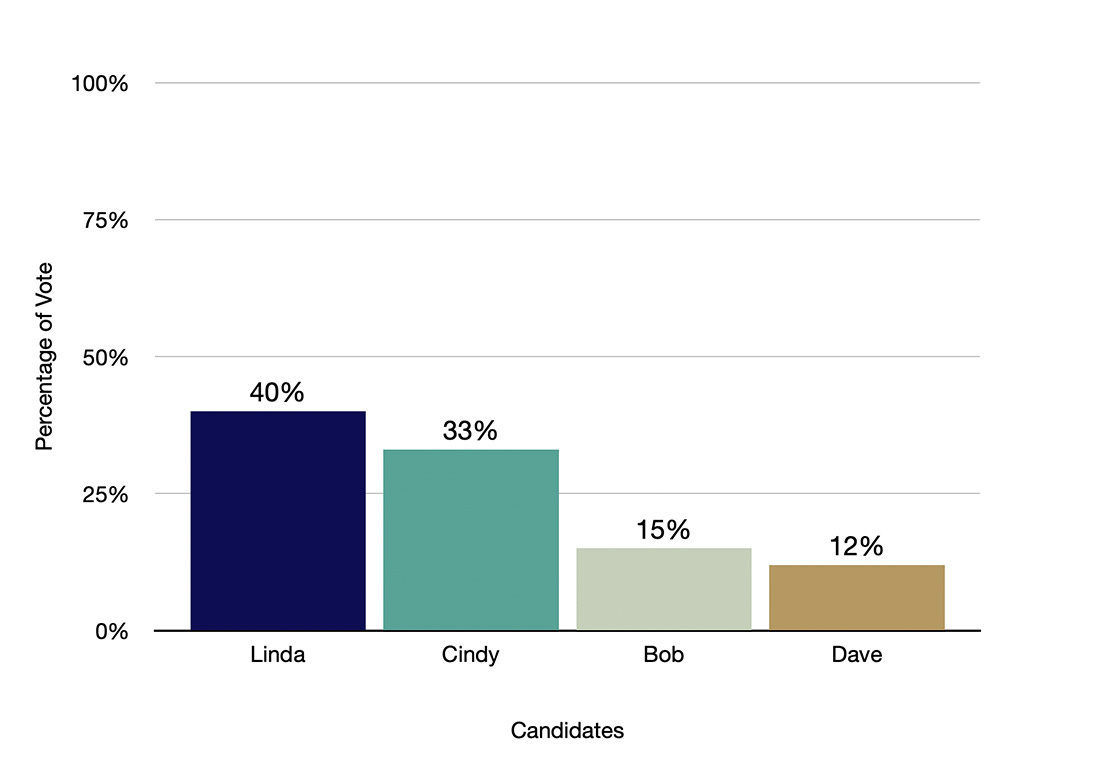
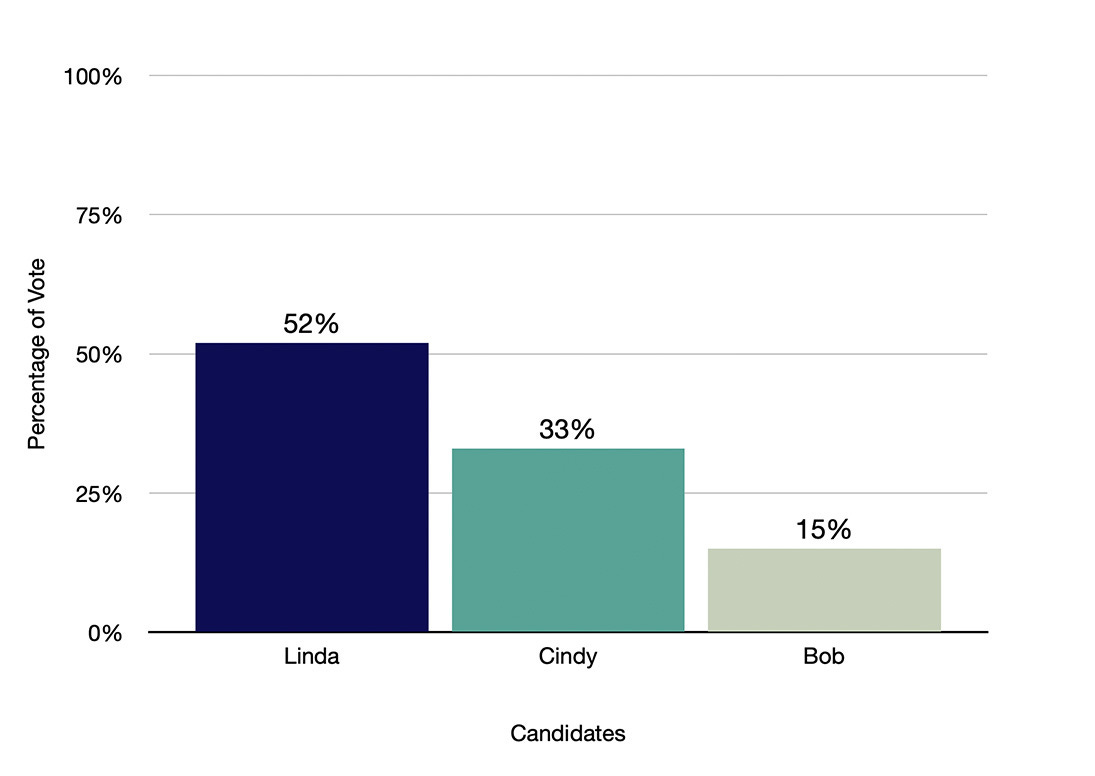
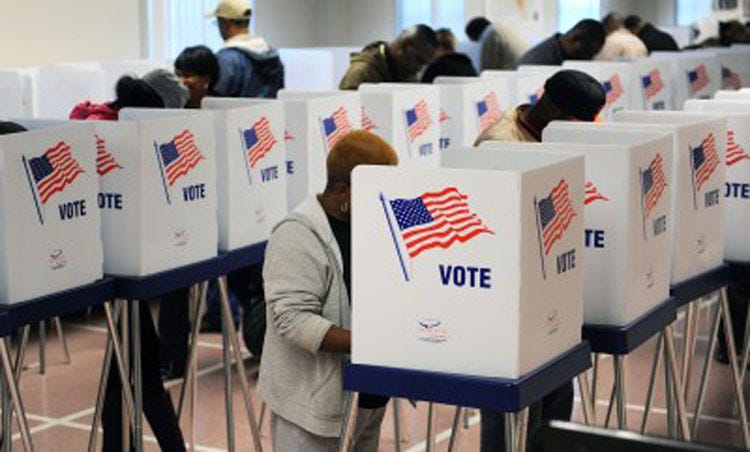
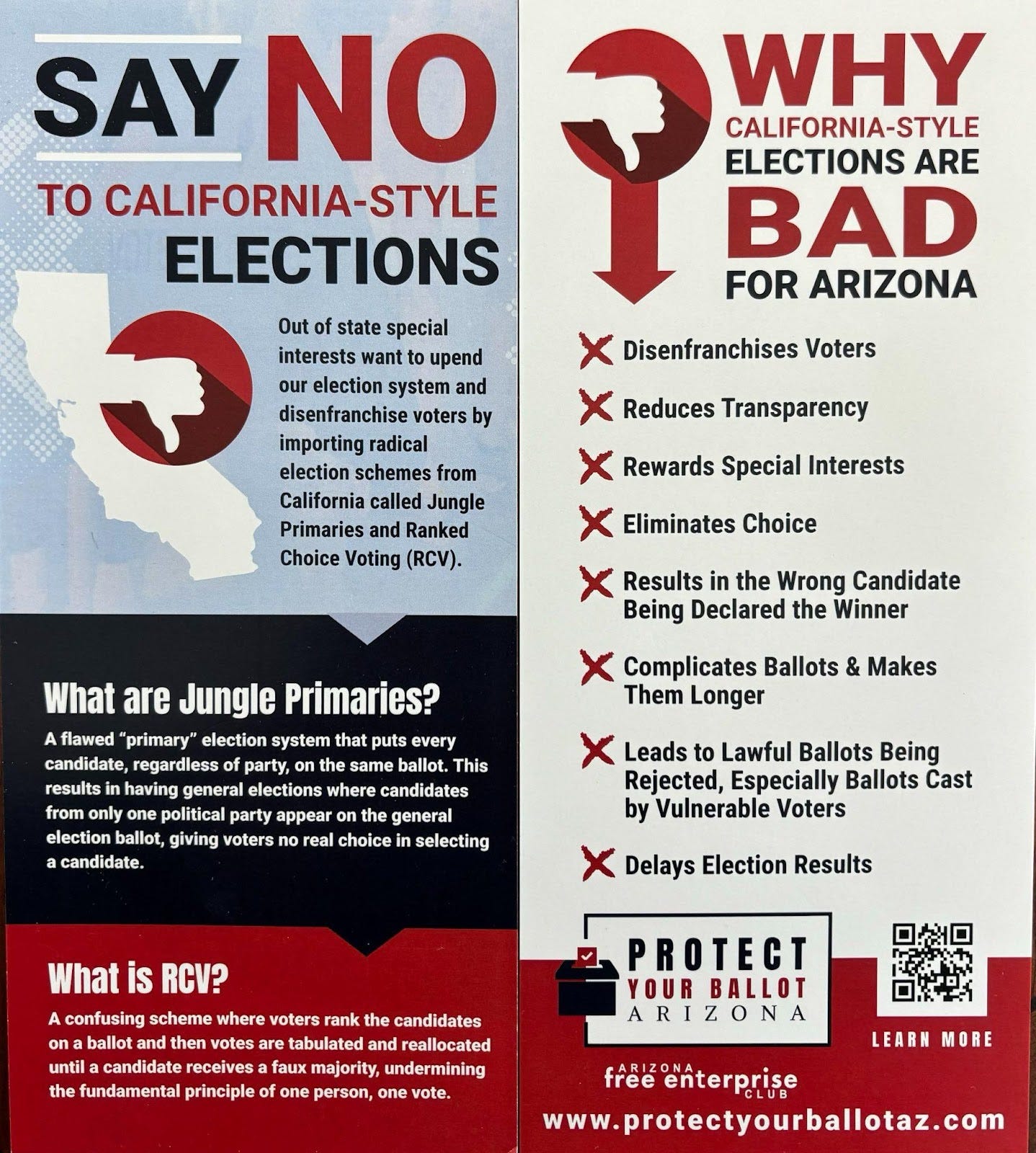
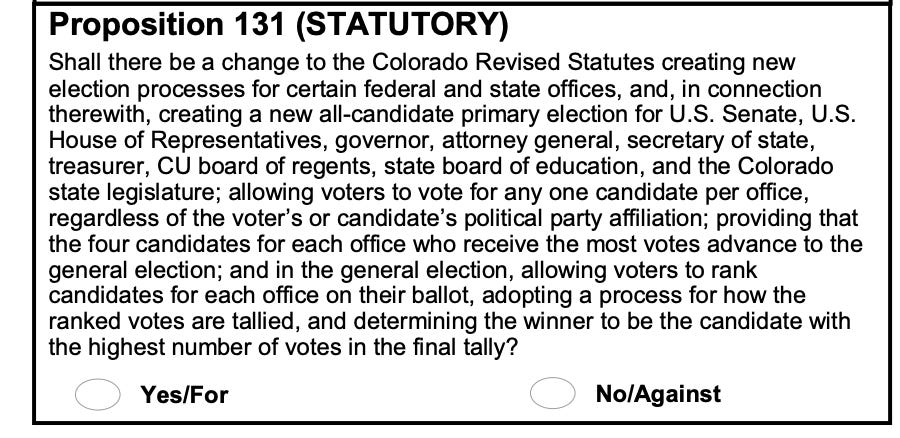
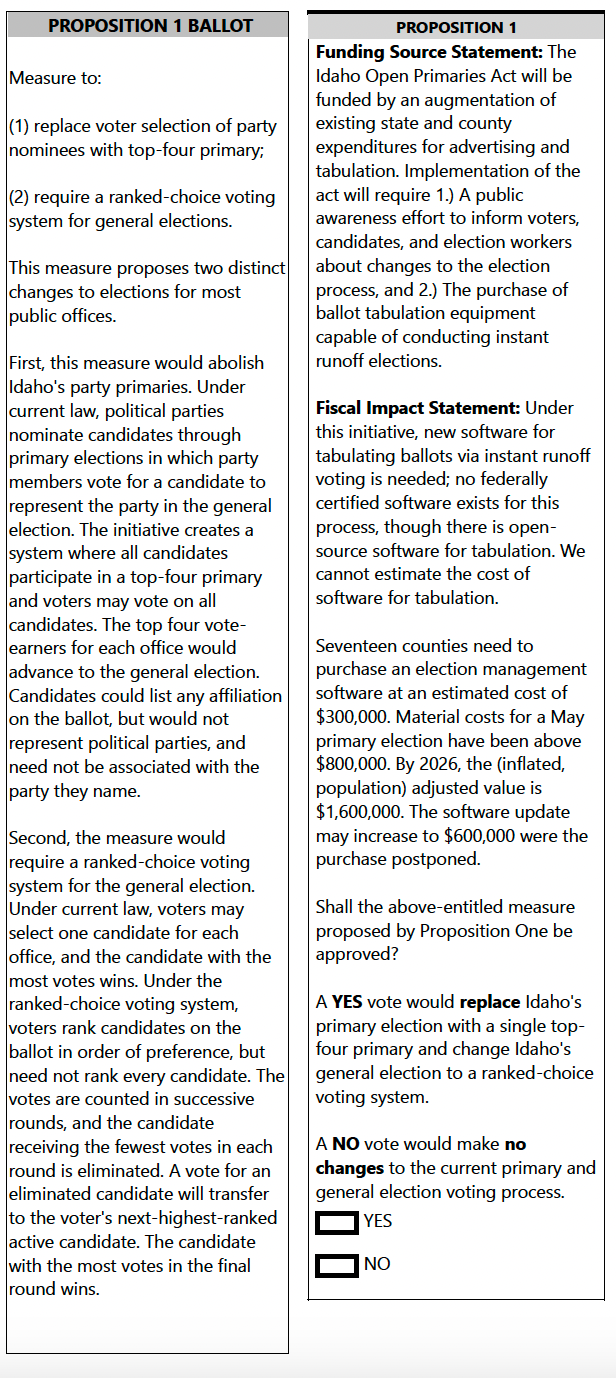
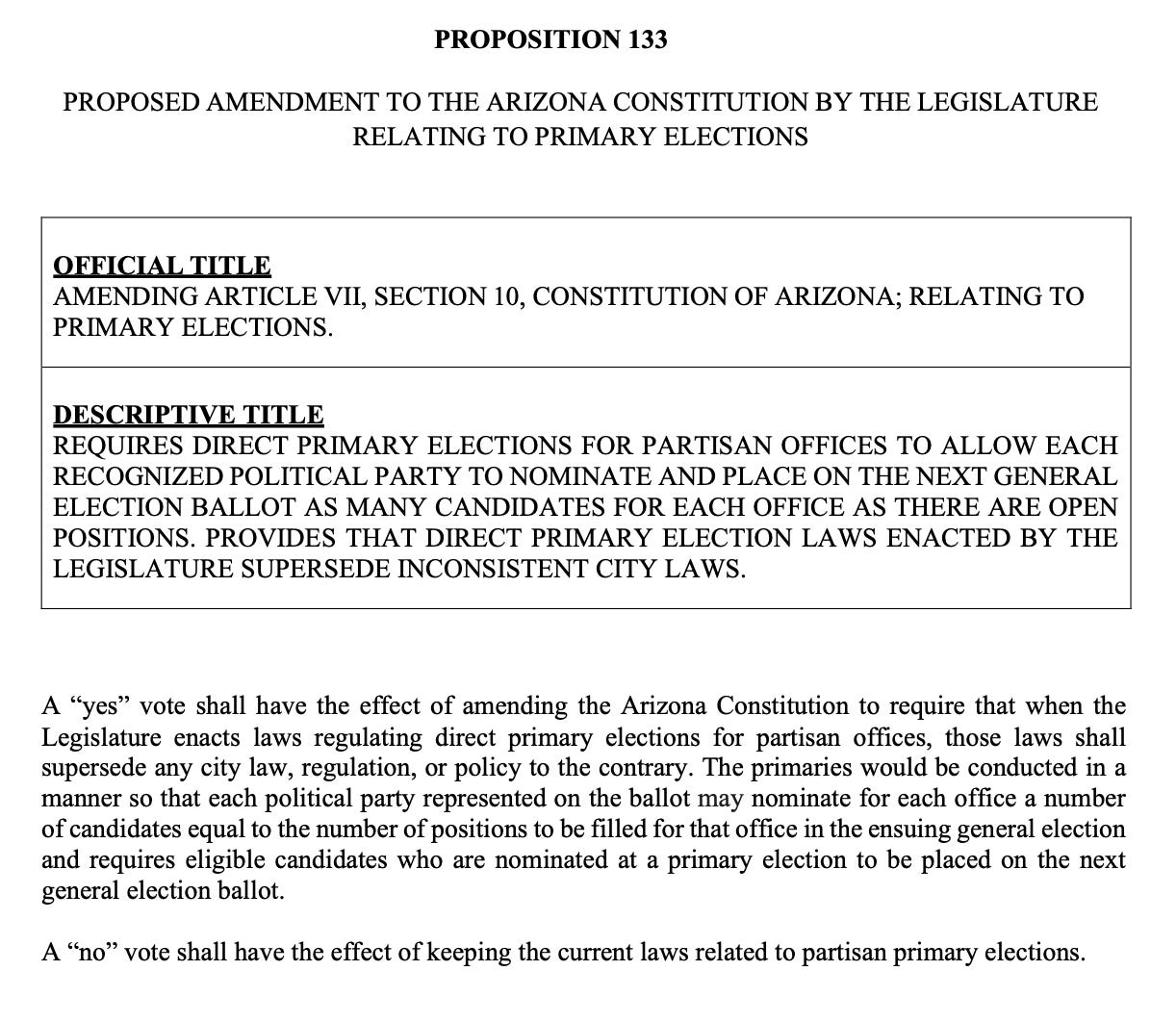
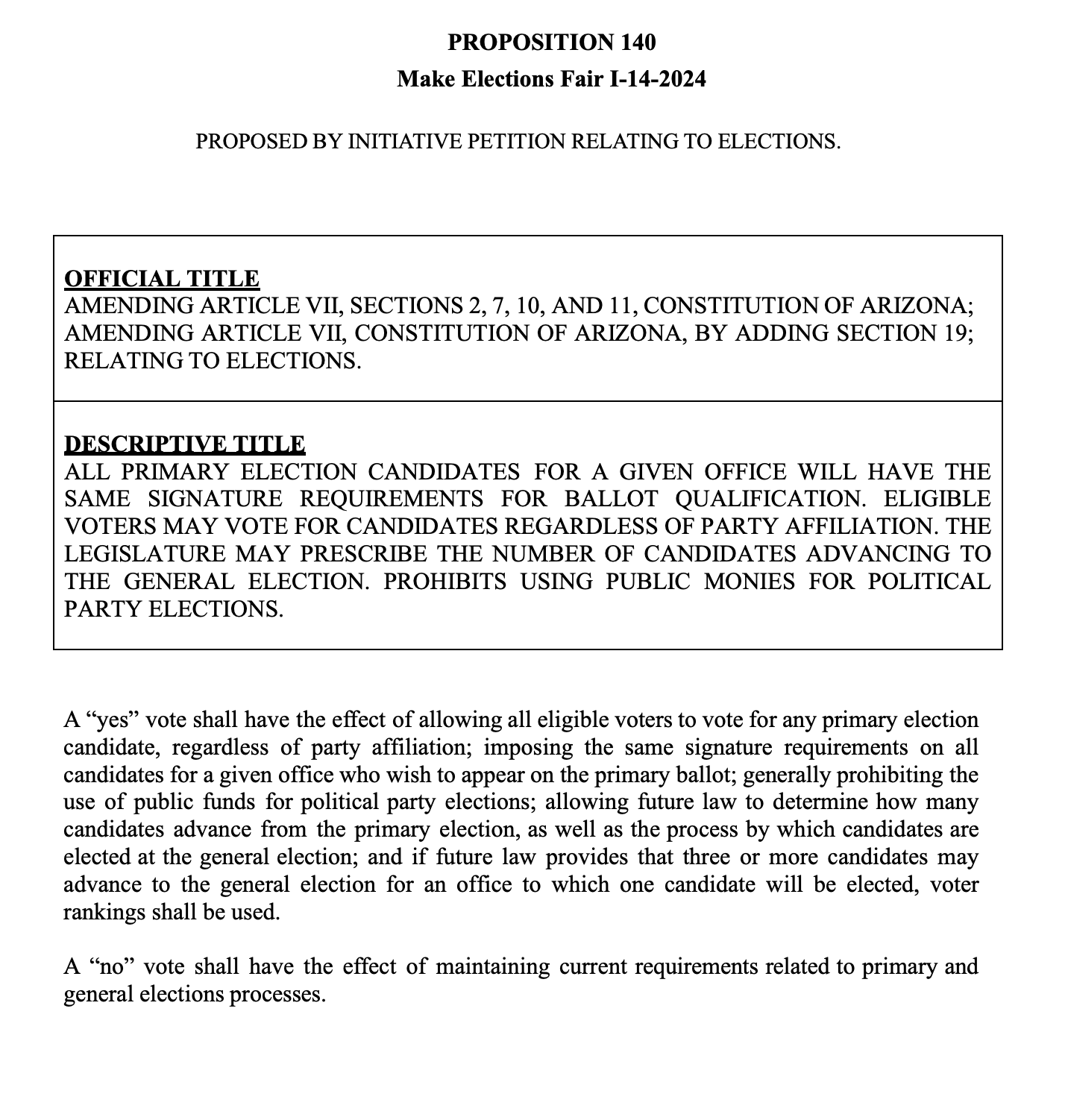
This article is infuriating. I'm glad you wrote it; I'm just so frustrated that so many states write ballot initiatives that are intentionally misleading or difficult to follow and also that so many states intentionally try to make voting more difficult and easier to manipulate.
It couldn't be more obvious that "red" states and conservative politicians know their policies are wildly unpopular among Americans who generally enjoy the benefits of a liberal (little L) government. Gerrymandering, making voting more difficult, making voting more confusing, doing the best they can to give power to parties instead of Americans. It's such a joke.
And yes, voter disenfranchisement happens from "blue" areas as well, but not nearly to extent to it's being perpetrated by the Republican party (because people actually like social safety nets, investment in infrastructure, making voting easy, etc...). Ugh...
I wish we had more politicians who had the courage and confidence to help Americans understand their options and make their won choices instead of spending so much time and energy manipulating into the options that empower politicians at the expense of their constituents. I'm not really sure how to get there....
Hi!
I am 14 years old,and we use the preamble for homeschool social studies!
I think that ranked choice voting is a very good option to kind of knock some sense into the government.Candidates would stop mudslinging,people wouldn't have to care about a far in the opposite direction president,because if Linda is very far right,and Cindy is moderate,with Dave being far left,then there's a high chance that Cindy will win as the second option for Linda and Dave voters
I find it silly that each state makes such long winded propositions,and that some states banned ranked choice even without ever having it.